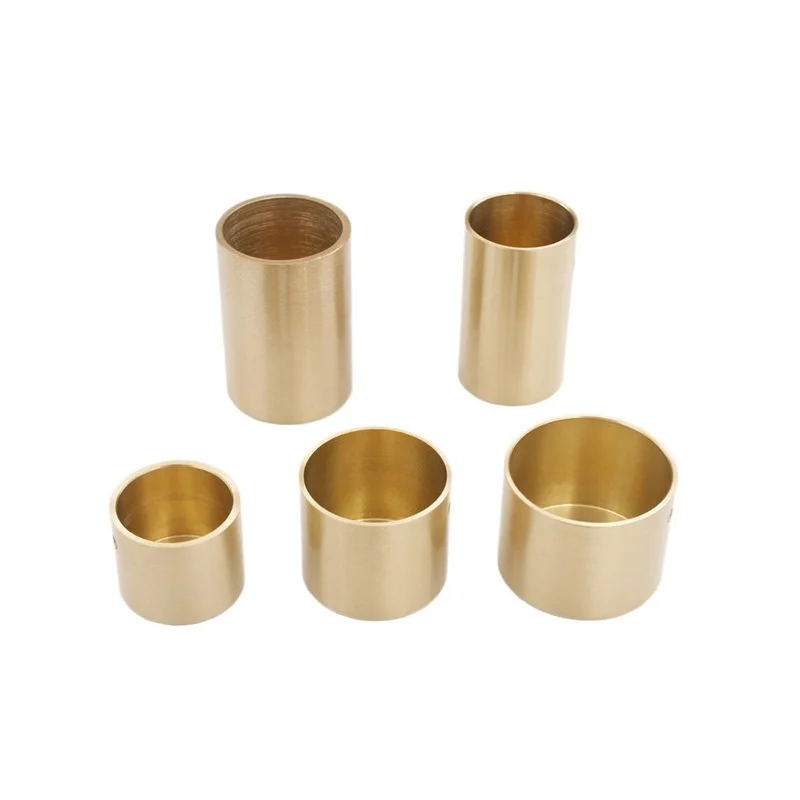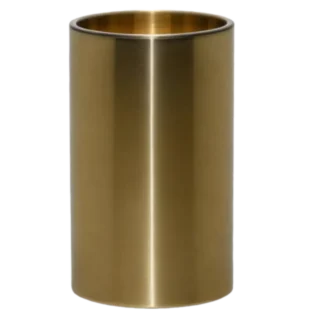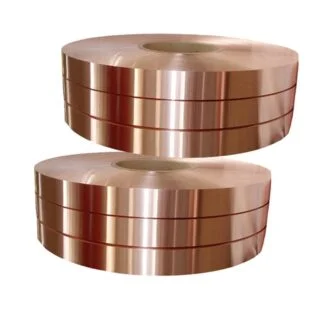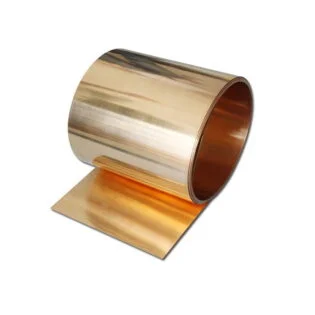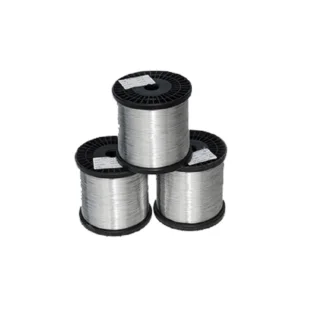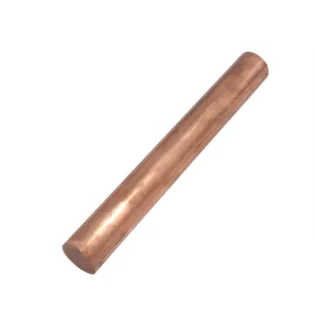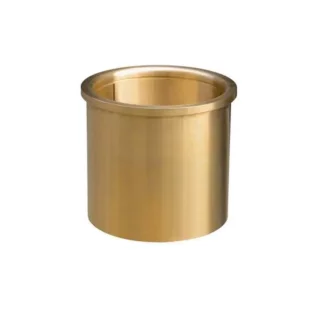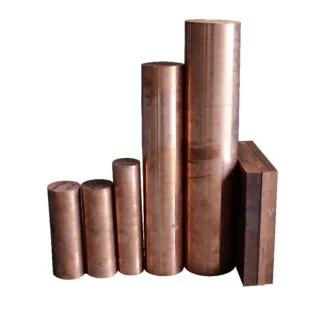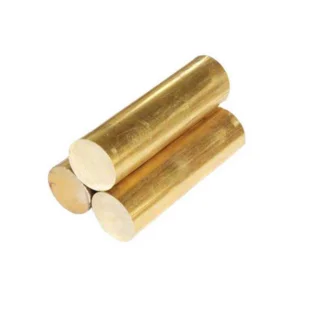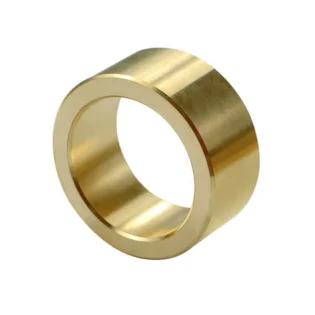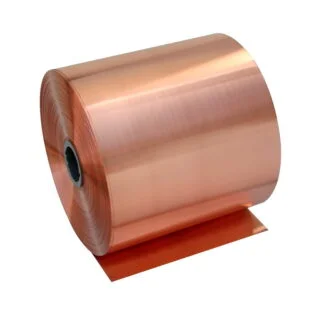C51000 Beschreibung
C51000 ist eine Zinn-Phosphor-Bronze-Legierung mit vielen hervorragenden Eigenschaften und einem breiten Anwendungsspektrum. In diesem Artikel konzentrieren wir uns auf die Eigenschaften und Verwendungsmöglichkeiten der Kupferlegierung C51000.
Einleitung: Die Zinn-Phosphor-Bronzelegierung C51000 ist ein wichtiges Kupferlegierungsmaterial mit hervorragenden Eigenschaften und vielfältigen Anwendungen. Seine chemische Zusammensetzung umfasst Kupfer (Cu), Phosphor (P), Zinn (Sn), Zink (Zn), Blei (Pb), Eisen (Fe) und Nickel (Ni). Die Kupferlegierung C51000 weist eine hervorragende Korrosionsbeständigkeit, Verschleißfestigkeit und antimagnetische Eigenschaften auf und eignet sich für eine Vielzahl von Industriebereichen. Als Nächstes untersuchen wir die Eigenschaften, Verwendungsmöglichkeiten und Antworten auf drei Fragen zu Zinn-Phosphor-Bronze.
Eigenschaften von C51000 Zinn-Phosphor-Bronze
Korrosionsbeständigkeit: Die Kupferlegierung C51000 zeigt eine hohe Korrosionsbeständigkeit in korrosiven Umgebungen wie Meerwasser und Atmosphäre und kann einen guten Betriebszustand aufrechterhalten. Verschleißfestigkeit: Diese Legierung weist eine ausgezeichnete Verschleißfestigkeit auf und kann zur Herstellung verschleißfester Teile und Gleitlager verwendet werden. und kann in Umgebungen mit hohem Druck und hoher Reibung eine gute Arbeitsleistung aufrechterhalten.
Antimagnetische Eigenschaften: Die C51000-Legierung hat gute antimagnetische Eigenschaften und eignet sich für Anwendungen, die antimagnetische Materialien erfordern.
Festigkeit und Elastizität: Die Kupferlegierung C51000 weist eine hohe Festigkeit und gute Elastizität auf und hält großen äußeren Belastungen stand.
Verarbeitungseigenschaften: Die Legierung verfügt sowohl im heißen als auch im kalten Zustand über gute Druckverarbeitungseigenschaften und kann durch Heißpressen und Schneiden geformt werden.
C51000 Zinn-Phosphorbronze ist ein wichtiges Kupferlegierungsmaterial mit hervorragenden Eigenschaften und einem breiten Anwendungsspektrum. Zu seinen Eigenschaften gehören Korrosionsbeständigkeit, Verschleißfestigkeit, antimagnetische Eigenschaften, Festigkeit und Elastizität usw. und es eignet sich zur Herstellung von Federn, verschleißfesten Teilen, antimagnetischen Teilen usw. Der chemische Zusammensetzungsgehalt von C51000 Zinn-Phosphor-Bronze wird genau kontrolliert, um dies sicherzustellen die Leistungsstabilität der Legierung. Durch ein tieferes Verständnis der Eigenschaften und Verwendungsmöglichkeiten der Legierung können wir ihre Vorteile in verschiedenen Bereichen besser nutzen.
Typische Verwendungen
Architektur: Brückentragplatten
Elektrik: elektrische Steckverbinder, elektrische flexible Kontaktmesser, elektromechanische Federkomponenten, elektronische und Präzisionsinstrumententeile, elektronische Steckverbinder, Sicherungsklemmen, Widerstandsdraht, Schalterteile, Drahtbürsten
Befestigungselemente: Splinte, Befestigungselemente, Sicherungsscheiben
Industrie: Schlagstange, Bälge, Bourdonrohre, chemische Hardware, Kupplungsscheiben, Membranen, Lochbleche, druckempfindliche Elemente, Hülsenbuchsen, Federn, Textilmaschinen, Bindedraht, Schweißstäbe
Ähnliche oder gleichwertige Spezifikation
| CDA | ASTHMA | SAE | AMS | Bundes | Militär | Sonstiges |
|---|---|---|---|---|---|---|
| C51000 | B139 B139M | J461 J463 | 4625 |
Chemische Zusammensetzung
| Cu% | Pb% | Sn% | Zn% | Fe% | P% | ||||||
|---|---|---|---|---|---|---|---|---|---|---|---|
Chemische Zusammensetzung gemäß ASTM B139/B139M-12(2017) Hinweis: Cu + Summe der genannten Elemente, 99,5 % min. Einzelwerte stellen Maxima dar. | |||||||||||
| Rem. | 0.05 | 4,20- 5,80 | 0.30 | 0.10 | 0.03- 0.35 | ||||||
Bearbeitbarkeit
| Kupferlegierung UNS Nr. | Bearbeitbarkeitsbewertung | Dichte (lb/in3 bei 20 °C) |
|---|---|---|
| C51000 | 20 | 0.320 |
Mechanische Eigenschaften
C51000
H04 hart
Größenbereich: 1/4″ bis 1/2″ rund und sechseckig inklusive
| Zugfestigkeit, min | Streckgrenze, bei 0,5 % Dehnung unter Last, min | Dehnung, 4x Durchmesser oder Probendicke, min | Rockwell-Härte „B“. | Bemerkungen | ||
|---|---|---|---|---|---|---|
| ksi | MPa | ksi | MPa | % | typische HRB | |
| 70 | 485 | 13 | 87 | |||
Größenbereich: über 1/2″ bis 1″ rund und sechseckig inklusive
| Zugfestigkeit, min | Streckgrenze, bei 0,5 % Dehnung unter Last, min | Dehnung, 4x Durchmesser oder Probendicke, min | Rockwell-Härte „B“. | Bemerkungen | ||
|---|---|---|---|---|---|---|
| ksi | MPa | ksi | MPa | % | typische HRB | |
| 60 | 415 | fünfzehn | 87 | |||
Größenbereich: über 1″ rund und sechseckig
| Zugfestigkeit, min | Streckgrenze, bei 0,5 % Dehnung unter Last, min | Dehnung, 4x Durchmesser oder Probendicke, min | Rockwell-Härte „B“. | Bemerkungen | ||
|---|---|---|---|---|---|---|
| ksi | MPa | ksi | MPa | % | typische HRB | |
| 55 | 380 | 18 | 87 | |||
C51000
H08-Feder
Größenbereich: 0,026″ bis einschließlich 1/16″ rund
| Zugfestigkeit, min | Streckgrenze, bei 0,5 % Dehnung unter Last, min | Dehnung, 4x Durchmesser oder Probendicke, min | Rockwell-Härte „B“. | Bemerkungen | ||
|---|---|---|---|---|---|---|
| ksi | MPa | ksi | MPa | % | typische HRB | |
| 115 | 790 | |||||
Größenbereich: über 1/16″ bis einschließlich 1/8″ rund
| Zugfestigkeit, min | Streckgrenze, bei 0,5 % Dehnung unter Last, min | Dehnung, 4x Durchmesser oder Probendicke, min | Rockwell-Härte „B“. | Bemerkungen | ||
|---|---|---|---|---|---|---|
| ksi | MPa | ksi | MPa | % | typische HRB | |
| 110 | 760 | |||||
Größenbereich: über 1/8″ bis einschließlich 1/4″ rund
| Zugfestigkeit, min | Streckgrenze, bei 0,5 % Dehnung unter Last, min | Dehnung, 4x Durchmesser oder Probendicke, min | Rockwell-Härte „B“. | Bemerkungen | ||
|---|---|---|---|---|---|---|
| ksi | MPa | ksi | MPa | % | typische HRB | |
| 105 | 725 | 3.5 | ||||
Größenbereich: über 1/4″ bis einschließlich 3/8″ rund
| Zugfestigkeit, min | Streckgrenze, bei 0,5 % Dehnung unter Last, min | Dehnung, 4x Durchmesser oder Probendicke, min | Rockwell-Härte „B“. | Bemerkungen | ||
|---|---|---|---|---|---|---|
| ksi | MPa | ksi | MPa | % | typische HRB | |
| 100 | 690 | 5 | ||||
Größenbereich: über 3/8″ bis einschließlich 1/2″ rund
| Zugfestigkeit, min | Streckgrenze, bei 0,5 % Dehnung unter Last, min | Dehnung, 4x Durchmesser oder Probendicke, min | Rockwell-Härte „B“. | Bemerkungen | ||
|---|---|---|---|---|---|---|
| ksi | MPa | ksi | MPa | % | typische HRB | |
| 90 | 620 | 9 | 95 | |||
Physikalische Eigenschaften
Von CDA bereitgestellte physikalische Eigenschaften *Bestimmt an einer Legierung mit 5 % Zinn und 0,2 % Phosphor. Dieser Wert variiert je nach Zusammensetzung. | |||||||||||
| US-üblich | Metrisch | ||||||||||
|---|---|---|---|---|---|---|---|---|---|---|---|
| Schmelzpunkt – flüssig | 1920 °F | 1049 °C | |||||||||
| Schmelzpunkt – Solidus | 1750 °F | 954 °C | |||||||||
| Dichte | 00,32 lb/in3 bei 68 ° F | 8,86 g/cm3 bei 20 °C | |||||||||
| Spezifisches Gewicht | 8.86 | 8.86 | |||||||||
| Elektrische Leitfähigkeit* | 15 % IACS bei 68 °F | 0.088 MegaSiemens/cm bei 20 °C | |||||||||
| Wärmeleitfähigkeit | 40 Btu/sq ft/ft h/°F bei 68 °F | 69,2 W/m bei 20 °C | |||||||||
| Wärmeausdehnungskoeffizient 68-572 | 9,9 ·10-6 pro °F (68-572 °F) | 17.1 ·10-6 pro °C (20-300 °C) | |||||||||
| Spezifische Wärmekapazität | 00,09 Btu/lb/°F bei 68 °F | 377,1 J/kg bei 20 °C | |||||||||
| Elastizitätsmodul bei Zug | 16000 ksi | 110310 MPa | |||||||||
| Steifigkeitsmodul | 6000 ksi | 41370 MPa | |||||||||
Herstellungseigenschaften
Von CDA bereitgestellte Herstellungseigenschaften | |||||||||||
| Technik | Eignung | ||||||||||
|---|---|---|---|---|---|---|---|---|---|---|---|
| Löten | Exzellent | ||||||||||
| Hartlöten | Exzellent | ||||||||||
| Autogenschweißen | Gerecht | ||||||||||
| Schutzgasschweißen | Gut | ||||||||||
| Beschichtetes Metalllichtbogenschweißen | Gerecht | ||||||||||
| Punktschweißen | Gut | ||||||||||
| Nahtschweißung | Gerecht | ||||||||||
| Stumpfschweißung | Exzellent | ||||||||||
| Fähigkeit zur Kaltumformung | Exzellent | ||||||||||
| Fähigkeit zur Warmumformung | Arm | ||||||||||
| Bearbeitbarkeitsbewertung | 20 | ||||||||||
Thermische Eigenschaften
Von CDA bereitgestellte thermische Eigenschaften *Die Temperatur wird in Fahrenheit gemessen. | |||||||||||
| Behandlung | Minimum* | Maximal* | |||||||||
|---|---|---|---|---|---|---|---|---|---|---|---|
| Glühen | 900 | 1250 | |||||||||
Gängige Herstellungsprozesse
Stanzen, Ziehen, Formen und Biegen, Stauchen und Stauchen, Rollengewindeschneiden und Rändeln, Scheren, Stanzen
Gängige Herstellungsprozesse, bereitgestellt von CDA
